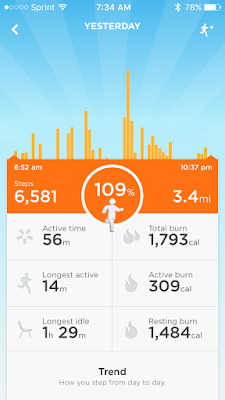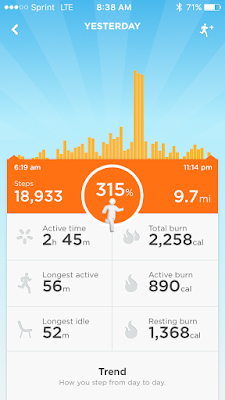So if you have the gene mutation your intestines will absorb twice as much iron from food as normal, and the excess iron will slowly build up in the body tissues. Many cases go undiagnosed because doctors and patients are unaware of the condition and don't know what to look for. Early symptoms are fatigue, sore joints and frequent infections, so they are easy to mistake for other conditions.
As the excess iron builds up in the organs, especially the liver, heart, spleen and pancreas it will destroy cells. Most people won't notice any symptoms until after the age of 30. Woman are less at risk for iron buildup because of the blood loss from their monthly menstruation. Left untreated the organs will literally rust inside. Average age of death is 57 mostly from liver cancer (30%). It can also cause liver cirrhosis, heart failure, diabetes and arthritis.
So how do you figure out if you have this problem. The two leading indicators are going to be Iron Ferritin (long term iron storage) and Transferrin Saturation %. If Ferritin is over 200 or Saturation is over 45% you could be a carrier. Iron Serum is not a good indicator and I can verify that as I had some normal Iron Serum levels in the past. Chris Kresser has a great video on iron overload and what levels to look for.
I do find it a little surprising considering how easy this is to test for and treat, why is this not more of a standard screen for hispanics and people of european decent? Seems like a no brainer to have your iron levels tested after the age of 30. I'm extremely lucky as I have been doing a lot of my own testing lately to optimize my health and the first indicator was an iron serum level. After that I got an iron panel done.
From here I went ahead and got my Ferritin level checked.
The testing company I used actually called me to let me know this was serious. Its pretty apparent that I have iron overload. I found this flow chart for diagnosing causes of Iron overload, this was from a guide for Australian GPs.
So from here I needed to see if I had the genetic mutation for HH. You can have your doctor order the HFE Gene test or you can do what I did which was a order a genetic test from 23andMe and check yourself. I choose this route as there was other information in the gene test I was interested in aside from figuring out if I had HH. The test is $200 and you spit in a tube and it took 9 weeks to process. You can read more about my genetic testing here.
Once you get the 23andMe results it doesn't just tell you if you have HH or not. You have to use the raw data piece to figure it out. This pdf will tell you how to do that.
Below is me entering the SNP number for C282Y on 23andMe. It shows I have the AA genotype which means I have the double mutation. GG would be normal.
Or you can take the 23andMe raw data file and feed it into a tool like Promethease ($5).
During this time I sent the results to my family doctor and he scheduled me in for a visit and also had me take another Ferritin test.
| Ferritin | 262.5 ng/mL | 21.8 - 274.7 ng/mL |
My doctor was not overly concerned because my results fall within the reference range on their test. The problem with these reference ranges are they are 2 standard deviations from the curve. In other words they include 95% of people's test results. These ranges are definitely not optimal and always keep that in mind when looking at your blood test results. Fortunately I had done my research already and knew the optimal range was more like 50-150. You have to be an advocate for your own health and not assume the doctor knows everything. I also had already ordered the gene test. I did ask for another Ferritin and iron panel test to just see where things were while I waited for the gene test. I took it about 3 weeks later.
| Component | Your Value | Standard Range |
|---|---|---|
| Iron | 162 MCG/DL | 65 - 175 MCG/DL |
| Iron Bind Cap Unsat | 65 MCG/DL | 110 - 370 MCG/DL |
| Iron Bind Cap Total | 227 MCG/DL | 228 - 428 MCG/DL |
| % Saturation | 71 % | 11 - 70 % |
| Component | Your Value | Standard Range |
|---|---|---|
| Ferritin | 239.8 ng/mL | 21.8 - 274.7 ng/mL |
The doctor was again ok with the results. However by this time the gene test had come back and I had verified I had the double gene mutation for HH. So I just faxed my doctor the page that showed that and I was referred to a Hematologist.
To remove the iron the best and simplest method is to give blood. I had looked into just donating blood to get the ball rolling. But I found out I can't give blood here because I lived in the UK for more than 5 years after 1980 (Mad Cows Disease). While I waited I did take Lacktoferrin (comes from breast milk binds to iron), stopped eating liver, no more supplemental vitamin C (increases iron absorption) and in general tried not to eat too much red meat.
I met with the Hematologist and the first thing she asked was if I was a scientist. Huh? I thought that was funny but I explained I was just really into in my health. I guess they were a little confused when I faxed in the SNP ids from one of my gene reports. She had no idea I could get this information myself. She confirmed that I had HH. Based on my iron levels she recommended I give a pint of blood every 2 weeks for 6 weeks and then have my iron levels retested. I was also scheduled for an ultrasound to check for any potential damage to the liver. There isn't any set frequency of blood draws it just depends on the person and their levels. First they have to get the Iron level down to a reasonable level. I was glad to hear my Hematologist was targeting a Ferritin level of 50. This would be the low end of the normal scale so it leaves room for build up until you get the next blood draw. However you don't want to go too low because at the other end of the scale is Anemia which is caused by too little iron. Once you get the levels down you then have to go on some sort of maintenance schedule and basically give blood for the rest of your life. Typically it would be something like once every 2 months but for me we haven't determined that schedule yet.
My kids will also eventually have to be tested. I was told to test them at 18. They are guaranteed at least one copy of the mutated gene from me since I have 2 copies. Its unlikely they would get another copy from my wife but still possible.
9/27/2017: Since the writing of this post I went ahead and had a 23 and me test done for my wife as I was just too curious to know if my kids could potentially have HH. She is GG for rs1800562 so combined with my AA they are all going to be heterozygous for C282Y. This means they will be at a slight risk for iron overload but are very unlikely to develop iron overload like I have. I'll probably recommend they still give blood once a year once they are 18 as it won't hurt and its a good thing to do.















